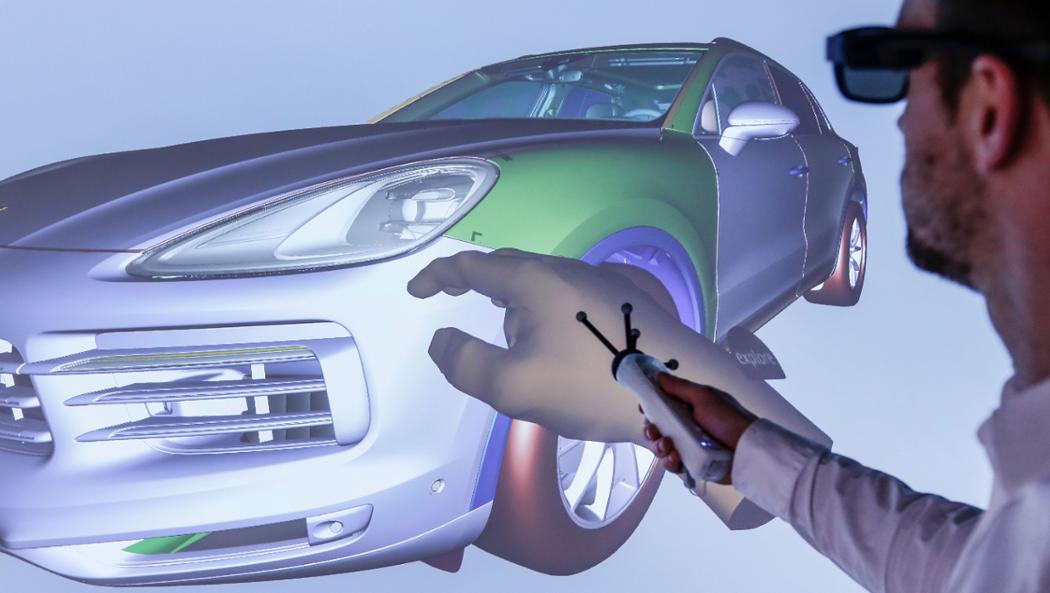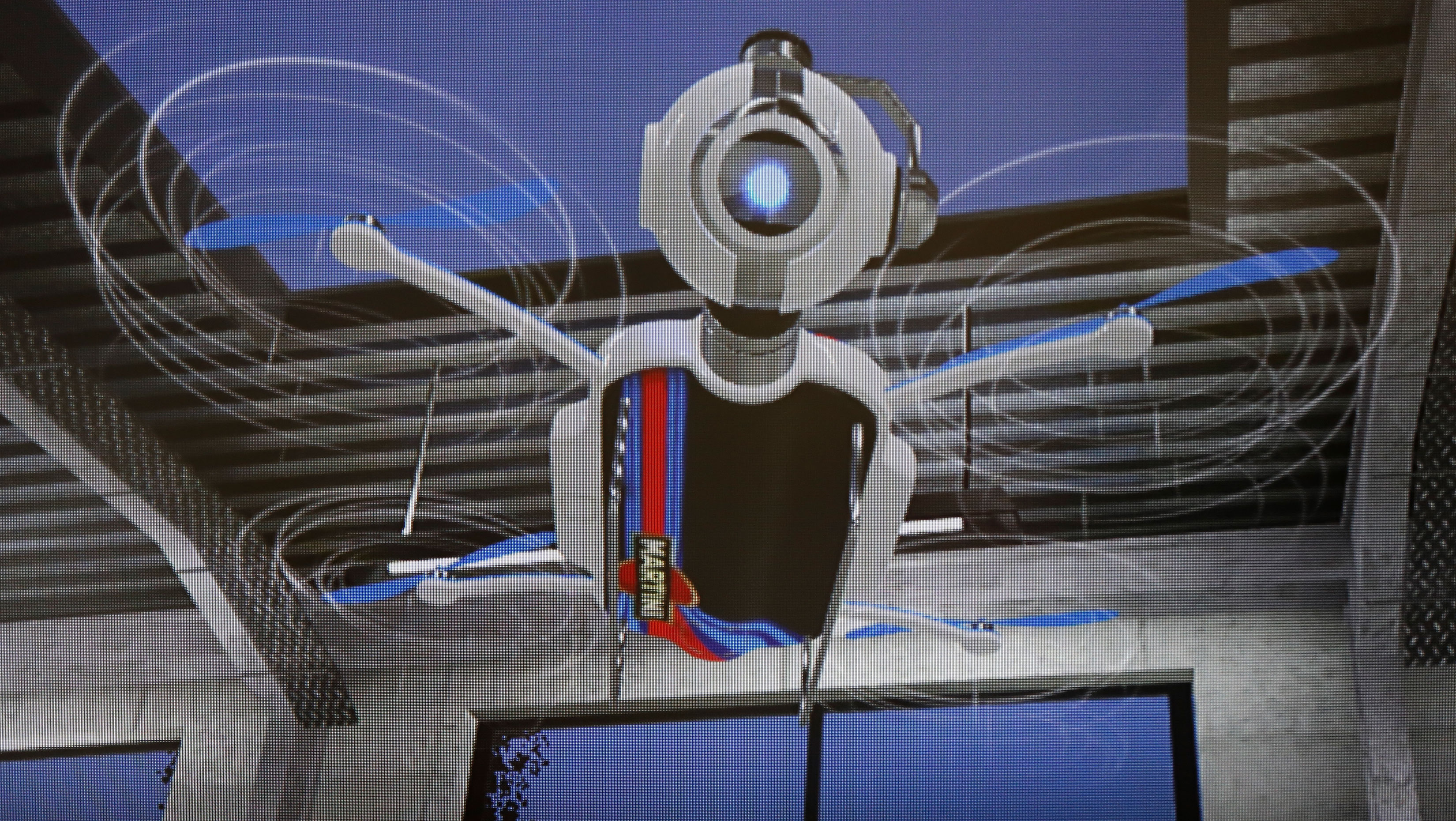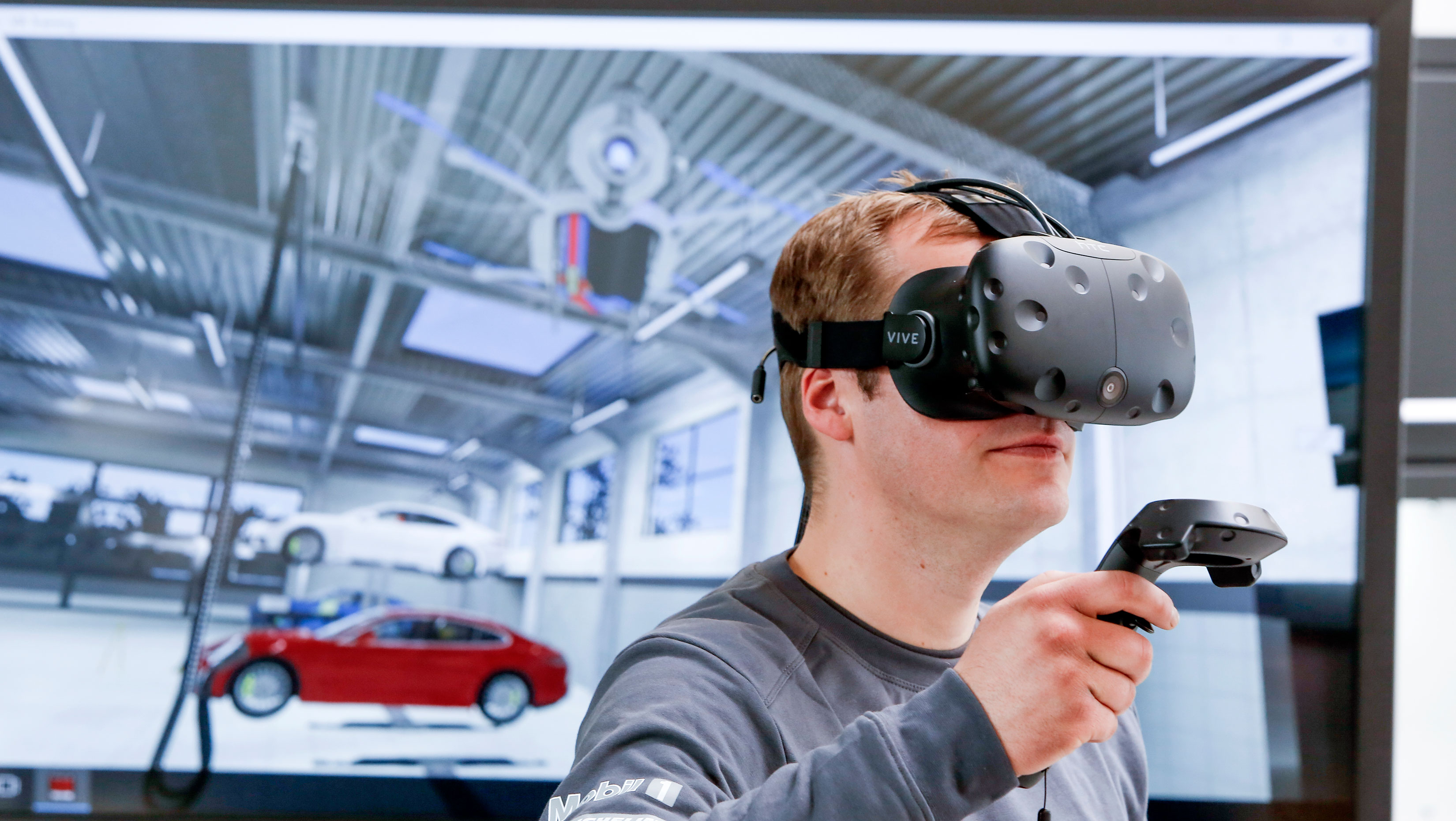Alice in Virtual Wonderland

Virtual reality now makes it easier for after sales employees around the world to address with complex technical concepts.
âOops, it looks like there is an error in cell module number three,â says Alice without any trace of emotion. “Alice” is a drone. A very charming drone, it must be said. And the authentic Martini Racing design that decorates her exterior is a treat for the eyes. Alice is also intelligent and helpful. To cite just one example, she can guide mechanics through the individual steps needed to repair the high-voltage battery of the Panamera 4 E-Hybrid. With Alice supervising them every step of the way, each individual movement can be practised in complete safety. Thatâs because the training takes place in the virtual world. Alice can only be experienced if you are wearing virtual reality or VR glasses.
The after sales department in Ludwigsburg, Germany is leveraging the possibilities offered by virtual reality to ready itself for the future. VR glasses are increasingly being used by technicians in all markets as an entirely new way of preparing for the more advanced instructor-led training. Super powers, X-ray vision, and interaction with Alice are just some of the things awaiting anyone who puts on the VR glasses, picks up the controller and enters one of the virtual spaces. And these features make it possible to achieve highly effective training outcomes long before new vehicles come onto the market.
âWeâve programmed a speaking drone to act as a personal assistant so people donât get so lonely,” explains Christian Binder, Project Manager for New Qualification Media, introducing Alice.
âRepairs to individual vehicle components can now be practiced using 3-D data, without the need for a real-life prototype.”
The value of this new technology is apparent from a true-to-life 3-D model of a Panamera 4 E-Hybrid that stands in the middle of a virtual (and otherwise empty) workshop hall. One click of the controller makes the bodywork disappear as if by magic, and the orange cables and high-voltage components hover mid-air in their installation locations. The first task is to take as much time as necessary to gain an overview of where the various modules in the electrified powertrain are located. The large 14.1-kWh lithium-ion battery at the rear of the vehicle can also be scrutinized from every angle. It doesnât take long to get used to the controller, while the shifts in the line of vision follow the natural movements of the userâs head.
Marc Wörsching, one of Binderâs colleagues, updates us on the latest developments: âAll of the trainers have already tested out the VR program, and weâve made changes in response to their feedback. The next step is to pilot the program in our training centers.” A good example of content covered in the VR program is the procedure for repairing high-voltage batteries. Topics such as these are prime candidates for early exposure before attending an instructor-led training course.
‘Around 8,000 technicians work in the Porsche Centers around the world. They are the people we want to reach with our new VR training program.’
Binder highlights another advantage of VR training: âThe content we have identified as most important can be delivered directly to our technicians exactly as we intend, avoiding the âChinese whispersâ effect we sometimes encountered previously. We were never sure if the recipients were seeing and hearing the right information.” As Project Manager, he is very clear about the core target group for VR training: âAround 8,000 technicians work in the Porsche Centers around the world. They are the people we want to reach with our new VR training program.” The technical barriers that must be overcome before entering the world of virtual training are relatively low: VR glasses, and a powerful laptop so that the high-resolution graphics can be displayed smoothly.
continued…


